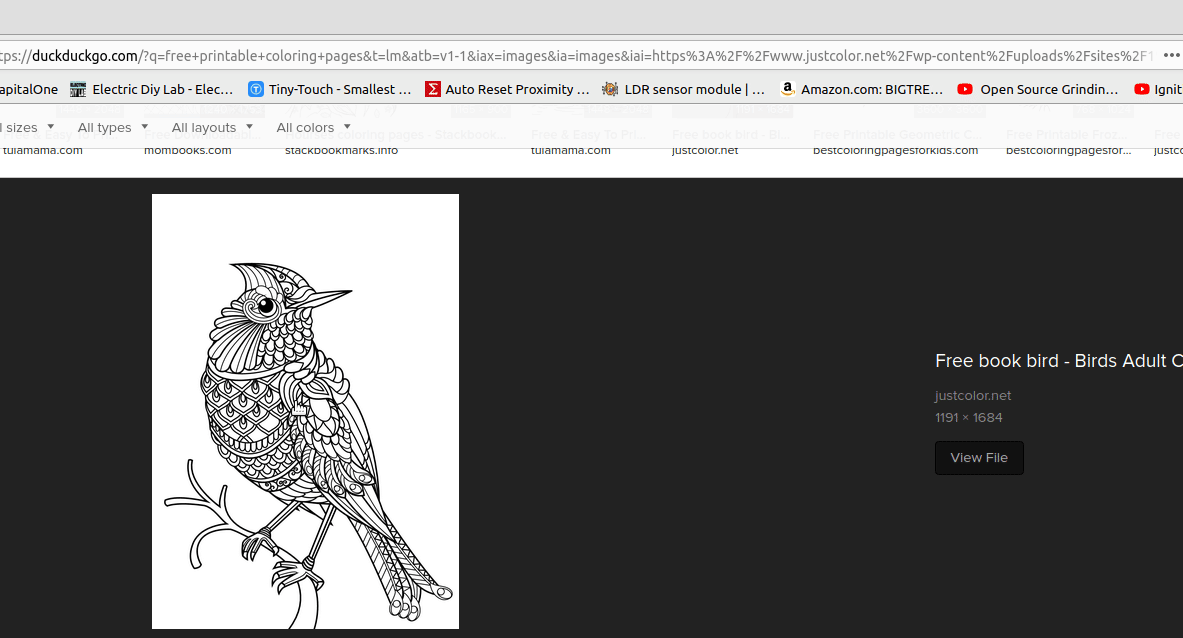

See here a tutorial on how to do it.įree cost but not open source.

Using the open source software VisualFSM you can convert the collection of images into a 3d cloud of point data - which can then be edited on Meshlab before printing. If you want to import an stl into OpenSCAD:įor a real-world item such as a photograph, an alternative is to use a group of images/photographs taken at a slightly different angle and with varying points of focus. Open in your favorite 3D printing software and have a go at printing it.Save as STL for printing: Click Design -> Save as STL (this could take some time depending on how complex your object is).Import ( file = " \\\\ \\ home \\ My Pictures \\ filename.dxf", convexity = 3 )

 Use the import command in the directory you saved it in. Either save the file into your OpenSCAD directory or move it after you save it. Then click the "Make selected segments lines" button - see screenshot (if you can not see the buttons click F2.). If you want a high resolution (curved lines) then click the far left button "insert new nodes into selected segments" (do this as many times as you like 2 or 3 times gets pretty smooth curves on most images. Select every node - go to Edit -> Select all or Ctrl+A. (if you drew it Path-> Object to path or click Shift+Ctrl+C). If it is a found image go to Path -> Trace bitmap - shift+Alt+B. Convert it to a path (if it worked you should see a bunch of grey squares). Get a 2D image and open it in Inkscape (or draw it in Inkscape). OpenSCAD -The programmers solid 3D CAD modeller. Inkscape - An open source vector graphics editor, with capabilities similar to Illustrator, CorelDraw, or Xara X, using the W3C standard Scalable Vector Graphics (SVG) file format. If anyone knows an easier way of doing this - please add in below. It's very stable & really does almost everything Illustrator does, only it's WAY better because it's Open Source & totally FREE.This page is part of the 2017 Principia course ENGR242: 3-D Printing Technology It's open edit now, so feel free to improve it. Making the above changes took about half an hour & now Inkscape. Just Google "Inkscape Mac GTK themes & toolsets". There are several sites that show you how to do this. I upgraded the butt-ugly Inkscape Windoze GUI theme to a snazzy dark grey GTK theme & tool set, which makes it look & almost like native Mac software. I makes my workflow much smoother & more efficient. This means I can use Inkscape without constantly stumbling around the keyboard. I altered the XQuartz (X11) keyboard commands to use the Command key instead of the Control key. 91 runs almost like a native Mac app-once I made two changes:ġ. Inkscape was always awkward on a Mac because it used X11 & Windoze key commands & the clunky Windoze interface.īut now Inkscape. I've been waiting for the promised Inkscape Mac native version for years, ever since Adobe bought & killed Freehand because Illustrator couldn't compete with it.
Use the import command in the directory you saved it in. Either save the file into your OpenSCAD directory or move it after you save it. Then click the "Make selected segments lines" button - see screenshot (if you can not see the buttons click F2.). If you want a high resolution (curved lines) then click the far left button "insert new nodes into selected segments" (do this as many times as you like 2 or 3 times gets pretty smooth curves on most images. Select every node - go to Edit -> Select all or Ctrl+A. (if you drew it Path-> Object to path or click Shift+Ctrl+C). If it is a found image go to Path -> Trace bitmap - shift+Alt+B. Convert it to a path (if it worked you should see a bunch of grey squares). Get a 2D image and open it in Inkscape (or draw it in Inkscape). OpenSCAD -The programmers solid 3D CAD modeller. Inkscape - An open source vector graphics editor, with capabilities similar to Illustrator, CorelDraw, or Xara X, using the W3C standard Scalable Vector Graphics (SVG) file format. If anyone knows an easier way of doing this - please add in below. It's very stable & really does almost everything Illustrator does, only it's WAY better because it's Open Source & totally FREE.This page is part of the 2017 Principia course ENGR242: 3-D Printing Technology It's open edit now, so feel free to improve it. Making the above changes took about half an hour & now Inkscape. Just Google "Inkscape Mac GTK themes & toolsets". There are several sites that show you how to do this. I upgraded the butt-ugly Inkscape Windoze GUI theme to a snazzy dark grey GTK theme & tool set, which makes it look & almost like native Mac software. I makes my workflow much smoother & more efficient. This means I can use Inkscape without constantly stumbling around the keyboard. I altered the XQuartz (X11) keyboard commands to use the Command key instead of the Control key. 91 runs almost like a native Mac app-once I made two changes:ġ. Inkscape was always awkward on a Mac because it used X11 & Windoze key commands & the clunky Windoze interface.īut now Inkscape. I've been waiting for the promised Inkscape Mac native version for years, ever since Adobe bought & killed Freehand because Illustrator couldn't compete with it.








 0 kommentar(er)
0 kommentar(er)
